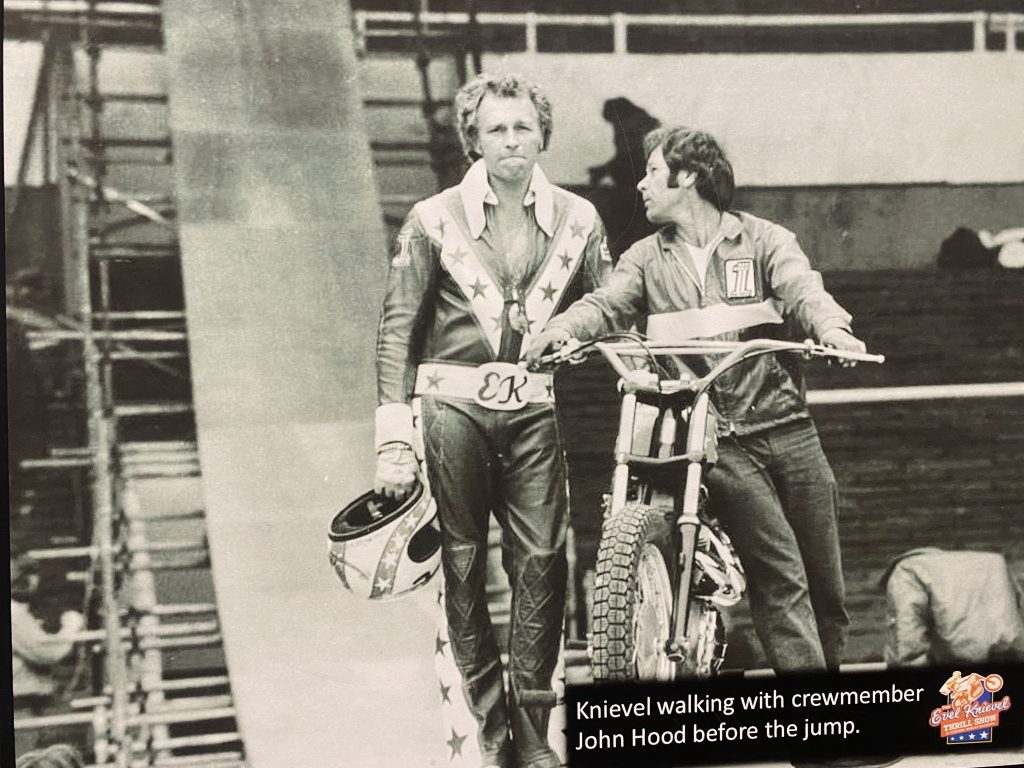Alright, so today I’m gonna talk about my little adventure with trying to figure out what an Evel Knievel bike was all about. You know, the man, the myth, the legend, jumping over stuff. I always kinda figured those bikes he rode were some kind of super-secret, custom-built machines, maybe with rocket boosters hidden somewhere. That was my big idea starting out, anyway.

So, a while back, I got this notion in my head. I wanted to build a tribute. Nothing crazy, not like I was gonna jump over a line of trucks. Just something that had the look, maybe a custom bicycle, or a small motorcycle project I could tinker with. My brilliant plan at first? Get the classic paint job, stick on some of those distinctive handlebars, and call it a day. Seemed pretty straightforward, right? How hard could it be?
Well, let me tell you, it wasn’t that simple. Not by a long shot. Once I really started digging into it, trying to make it somewhat authentic, I just slammed into a wall. The paint scheme, yeah, that’s iconic, everyone knows it. But the actual bikes he used? They weren’t some unobtainable, high-tech wonders fresh from a secret lab. Most of the time, he was on pretty standard bikes for the era, like Harleys or Triumphs. The big difference was they were heavily, and I mean heavily, modified. Not to go faster, but to survive those insane landings, even the ones that didn’t go so well. The real secret sauce wasn’t in some rare engine part; it was all about how they were beefed up and, crucially, balanced.
What I Learned the Hard Way
Man, this whole thing was a learning curve. Here’s some of the stuff I bashed my head against figuring out:
- Suspension, oh god, the suspension: This part nearly drove me nuts. The stock suspension on the bikes he typically started with? It wouldn’t have survived a single one of his smaller jumps, let alone the monsters. I spent ages squinting at grainy old photos, trying to figure out what kind of travel they were getting, how they beefed up the shocks. For my little project, which wasn’t going to be flying over canyons, I still had to scrounge around for much stronger springs and figure out ways to make them fit. It felt like I was just hacking stuff together half the time.
- That frame needed to be tough as nails: You can’t just land a couple hundred pounds of motorcycle from a huge height without something giving. Those frames were reinforced like crazy. They’d weld in extra supports, gussets, anything to stop them from bending like a pretzel. I tried to copy that spirit on my build, even though it wasn’t going to face nearly the same abuse. It was more about understanding the principle.
- Weight and balance were a bigger deal than I thought: It wasn’t just about making the bike indestructible. It also had to be somewhat controllable in the air. Knievel wasn’t just a passenger on a missile; he had to wrestle that thing. Getting the weight distribution right was super important, and that’s something you don’t really think about until you try to make something stable.
So, Why This Obsession Anyway?
Now, you’re probably thinking, “Why get so bogged down in all this Evel Knievel bike stuff?” It’s kind of a roundabout story, actually. I used to have this job, super boring, just shuffling papers and staring at a computer screen all day. You know the type. Every day felt exactly the same. Then, one fine day, I got laid off. Poof, just like that. Suddenly, I had all this time on my hands and, frankly, a lot of frustration to work off.
I was moping around the house, ended up cleaning out the garage – mostly to avoid thinking about things. And there it was, this old, beat-up dirt bike frame I’d completely forgotten about. It had been sitting there for years. Later that week, I was channel surfing and landed on some old footage of Evel Knievel. Watching him, the sheer guts of it all, something just clicked. It hit me that the amazing part wasn’t that his bikes were magic; it was the man himself, the incredible amount of work, and the engineering that went into just giving him a fighting chance.

So, I started tinkering with that old frame. At first, it was just something to keep my hands busy, stop me from going stir-crazy. But the more I researched Evel’s bikes, the more I realized it was the perfect challenge. It wasn’t about building a museum-quality replica to show off or sell. Nah. It was about the process. It was about learning how things actually worked, getting my hands dirty, and making something real after years of just clicking a mouse. It was a way to prove to myself I could still figure things out.
My bike? It’s far from a perfect Evel Knievel replica, and it sure as heck isn’t going to be jumping over any fountains, let alone buses. But it runs, it’s got that Knievel spirit (at least I think so!), and every time I look at it, I remember that whole period of struggle and discovery. It taught me a lot more than just motorcycle mechanics. It taught me about sticking with something, even when it’s frustrating. And you know what? I haven’t missed that old desk job for a single second. This building and fixing stuff? Way more satisfying.
